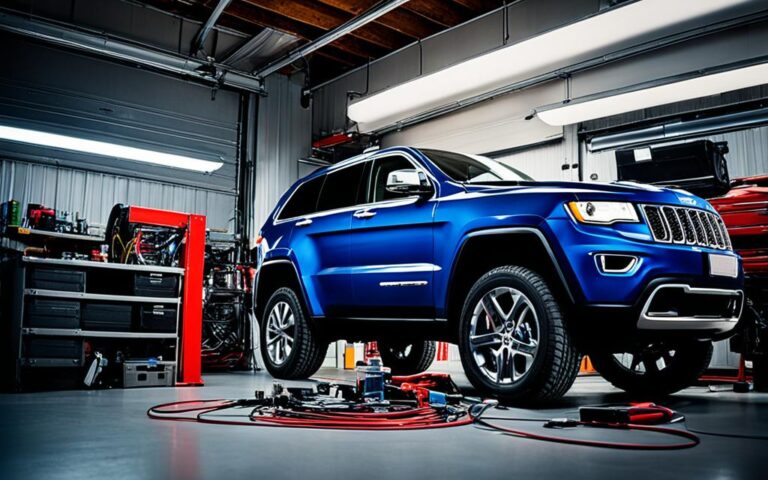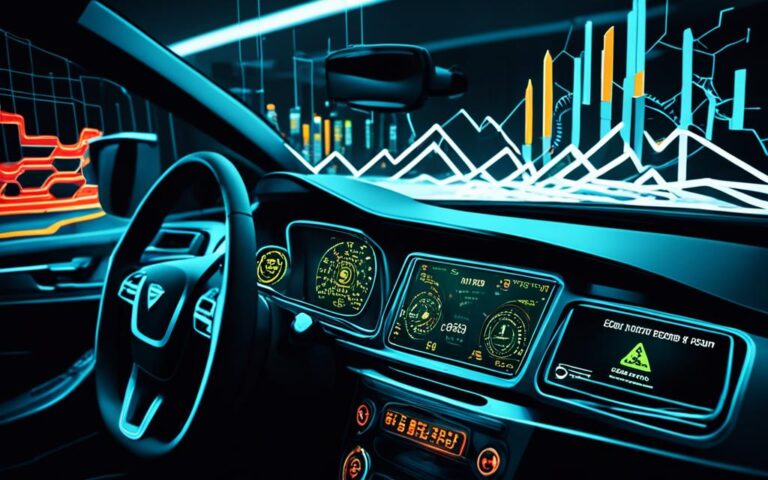A computer peripheral is an external device that connects to a computer to make it do more. These devices can help you put information in or show you results. For example, keyboards and mice are for putting in information, while printers and speakers show you results.
Other peripherals like external hard drives and routers help with storing and connecting to the internet. It’s key to know which ones you can use with your computer to make sure they work well together.
Computer peripherals are vital for making your computer work better and do more. But, you need to know the rules to keep your devices safe and working right with your computer. Following these rules helps you use your computer better and keeps your data safe.
Using two-factor authentication is a big step in keeping your computer safe, as the Department of Defense suggests [1]. This extra check makes it harder for others to get into your computer without permission.
It’s also a good idea to change your passwords every three months . This keeps your computer and its devices safe from hackers.
Don’t use the same password for different places or apps . Using different passwords makes it harder for hackers to get into all your accounts at once.
There are rules for keeping your CAC/PIV cards safe . These rules tell you how to handle and protect these cards to keep your personal info safe.
Using DoD PKI tokens is another way to keep your computer safe . These tokens make sure only the right people can get into your computer and its resources.
Key Takeaways:
- Implement two-factor authentication for enhanced security1
- Change passwords regularly to safeguard against unauthorized access1
- Use unique passwords for different systems and applications1
- Follow guidelines to protect your CAC/PIV cards1
- Ensure the usage of DoD PKI tokens for enhanced security1
Types of Computer Peripherals
Computer peripherals come in many types, each with its own role. These include input devices, output devices, storage devices, and networking devices. Let’s look at each type closely:
Input Devices
Input devices let users put data into the computer. Examples are keyboards, mice, and webcams. They help users talk to the computer and give it commands2.
Output Devices
Output devices show or play back information from the computer. You might use a monitor, printer, or headphones. They help users see, hear, or get info2.
Storage Devices
Storage devices are key for keeping and moving data around. They include things like CD-ROMs and flash drives. These devices can also be used for input and output, letting users read from and write to them2.
Networking Devices
Networking devices help computers connect to networks or the internet. Routers and modems are examples. They make it possible for computers to talk to each other and share data2.
There are also other peripherals like smartphones and fitness trackers. They’re not traditional peripherals but do similar jobs and make computing better2.
To sum up, there are many kinds of computer peripherals. They range from input to output devices, storage, and networking. These peripherals are vital for making computers work well. They help users put in, process, and get out information2.
Compatibility of Computer Peripherals
Setting up computer peripherals needs careful thought about system compatibility. It’s key to know the system needs for each device. The right peripheral boosts your computing, but consider compatibility, system needs, and drivers.
Understanding Peripheral Compatibility
Peripheral compatibility means a device works well with your computer. Not all devices fit with every computer, so check before buying. Look at the system needs from the maker.
Statistical data3 shows peripherals are split into three types: Input, Output, and Storage. You’ll find keyboards, mice, scanners, and more in these categories.
Before buying a peripheral, check if your computer can support it. This means looking at hardware, software, and drivers needed.
Computer System Requirements
What your computer needs varies by peripheral. Keyboards and mice need certain ports and drivers. Scanners and webcams too.
Printers and speakers have their own needs, like ports and connections. Storage devices like hard drives need the right ports and drivers for data.
Networking devices like routers and modems need the right connections and drivers for networking.
Statistical data4 shows wired connections include USB and HDMI. Wireless options are Bluetooth and Wi-Fi.
Some peripherals, like barcode scanners, have special needs. Graphics tablets and VR headsets too.
Device Drivers
Device drivers let peripherals talk to your computer. They’re vital for the device to work right and use its full potential.
If a device needs extra software or drivers, check the maker’s site for updates. This ensures it works well with your system.
Statistical data4 points out drivers are key for device and computer communication.
Setting up and Installing Computer Peripherals
To set up a new device, first connect it to your computer’s port or use a wireless connection5. Then, download and install drivers or software from the manufacturer’s site6. The steps to install vary by device and system, so follow the instructions carefully6. After setting it up, adjust the device’s settings to fit your needs5.
When adding a device like a printer or webcam, check it works with your computer’s system and ports5. There are many cables for different peripherals, like for monitors and keyboards5. Use the right cable for each device for smooth connection and use5.
Common PC peripherals include monitors, keyboards, and speakers6. These devices connect through various ports and connectors. Audio devices use a 3.5 mm plug, while USB is common for many peripherals6. Some devices need software or drivers for full functionality6.
USB devices plug in and Windows sets them up automatically6. Bluetooth devices might need a PIN for pairing6. Ensure they’re in pairing mode before connecting with your computer6.
Keep your peripherals running well by ensuring good airflow and avoiding overheating5. This helps prevent damage and keeps them working well. Always follow the manufacturer’s care instructions to keep your devices in top shape5.
If you run into problems setting up, check the manufacturer’s support resources for help6. Proper setup boosts your computing experience and productivity6.
Enhancing Productivity with Computer Peripherals
Computer peripherals are key to boosting productivity by adding more functionality and efficiency to your setup. By choosing the right ones, you can do tasks faster and save time and effort.
Optimizing Input Devices
Choosing the right input devices can really change how productive you are. For example, a mouse is better than a trackpad for moving the cursor accurately and quickly. This can prevent health problems like sprained wrists, as 85% of people find the wrong mouse type tiring7.
Wireless mice are great for people who work in open spaces. 67% of them prefer these mice for comfort. They help reduce hand strain and make working more comfortable7.
Expanding Display Real Estate
Having more display space can make you more productive. It lets you keep more windows open at once, making it easier to work on different tasks without switching back and forth.
High-resolution monitors with bright colors and quick response times make work easier on the eyes. This means you can work longer without getting tired or straining your eyes8.
Efficient Document Processing
Devices like printers, scanners, and organizers make handling documents faster and easier. They help you print, scan, and organize papers without much effort. This makes your work flow smoother.
Reducing Cable Clutter
Cable mess can slow you down and make your desk look bad. Using things like the NZXT Puck and USB docking stations helps keep cables tidy. These tools improve your workspace and make it easier to use your devices, saving you time.
Ensuring Device Compatibility
It’s important for peripherals to work well with your devices. A universal laptop adapter is key for keeping your gadgets safe from damage. 78% of people think these adapters are a must-have7.
Boosting Communication and Collaboration
Good communication and teamwork are key to getting things done. Quality headsets with noise-cancelling tech and phone compatibility are popular for clear calls and listening. 82% of people use them for better audio7. Webcams are also important for remote work, making online meetings easier7.
Storage and Backup Solutions
External hard drives are a top choice for backing up data. They help keep your laptop free from clutter and make sharing files easy. 89% of people use them for this purpose7.
Enhancing System Performance and Longevity
Peripherals like CPU air coolers are crucial for keeping your computer running smoothly. They cool down the processor, which keeps your system stable and saves on maintenance costs. 70% of users value these coolers for their ability to manage heat7.
Maintenance and Care of Computer Peripherals
Looking after your computer peripherals is key to making them last longer and work better. Clean and protect them regularly to improve your computing experience.
Be gentle when cleaning peripherals to avoid damage. Use soft cloths to wipe away dust and marks. For tight spots, compressed air can clear out debris. Cleaning keeps your peripherals looking good and stops them from overheating, which is important for devices like keyboards and mice.
Studies show that desks and keyboards can be dirtier than toilets9. So, cleaning your peripherals often is important for a clean workspace. Clean your keyboard weekly to cut down on health risks and keep your space clean9. Cleaning your monitor weekly also keeps your screen clear, making it easier to read and reducing eye strain9.
Protecting your peripherals from damage is also key. Don’t expose them to extreme heat or moisture, as this can cause problems or damage them beyond repair. Use surge protectors and keep food and drinks away from your computer to avoid spills and damage910.
Updating drivers is also important for peripheral maintenance. It keeps your peripherals working well and securely. Manufacturers update drivers to fix bugs, improve performance, and work better with new systems and apps. Regular updates ensure your peripherals run smoothly and safely10.
In summary, taking good care of your computer peripherals is vital for their longevity and performance. Clean them regularly, protect them from damage, and update drivers to keep them reliable and functional. These steps will help you enjoy your computer more and make your peripherals last longer.
Department of Defense Guidelines for Computer Peripherals
The Department of Defense (DoD) has set rules for using computer peripherals in DoD areas11. DoD-issued peripherals, like CAC readers, can be returned and used again. But, personally-owned devices need approval before they can enter DoD spaces11. It’s vital to follow DoD rules when using your own devices, as some may not be allowed in classified areas. Keeping sensitive info safe and maintaining top cybersecurity is key in DoD settings.
Permissible Peripherals and Security Measures
DoD has rules on what computer peripherals are okay to use with government equipment. This includes monitors under certain conditions, wired keyboards, mice, trackballs, USB hubs, and headphones/headsets11. Sticking to these rules helps keep data safe and systems secure. Also, using wireless networks in DoD areas needs strong security steps like WPA2 encryption and limiting device access11.
Securing Wireless Technology and IoT Devices
Wireless tech and IoT devices in the DoD need extra safety steps. It’s important to set up security options, turn off wireless when not needed, and follow wireless security rules11. IoT devices can be a security risk. They can be vulnerable to attacks within minutes of connecting to the internet11. So, it’s key to use default security settings, disable recording features, and set strong passwords to keep IoT devices safe11.
Proper Home Computer Security
Keeping home computers safe for DoD work is just as important. Use strong passwords, keep software updated, and install antivirus software to protect your info11. The DoD also offers antivirus software for personal devices through the DoD Antivirus Home Use Program11.
| Type of Peripheral | Permissible | Not Permitted | Security Measures |
|---|---|---|---|
| Monitors | Under specific conditions | Connected via USB | – Implement WPA2 encryption – Limit access to specific devices – Change router settings and passwords – Establish a VPN immediately |
| Keyboards, mice, trackballs | Wired | – Peripherals from prohibited sources – Bluetooth and wireless peripherals – Installation of drivers for personally-owned peripherals |
|
| USB hubs, headphones, headsets |
Following the Department of Defense’s rules for computer peripherals keeps sensitive info safe and DoD systems secure. By understanding and following these guidelines, people can help make DoD digital spaces safer.
Choosing the Right Peripherals for Your Needs
When picking peripherals for your computer, think about what you need, what you like, and what you do. This will help you pick the right ones that boost your work and make using your computer better. Whether it’s for gaming, making art, office work, or just general use, knowing what you need will lead you to the best choices.
Cost is a big factor when choosing peripherals12. Prices vary a lot. For example, a basic keyboard might be £35-£50, but top models could be £100 or more13. Big computer monitors are getting cheaper too, with a 34″ screen costing less for those wanting a big workspace13. Work out your budget and decide where to spend your money based on what you really need and like.
How well something performs is also key12. Some parts might cost more but work better or hold more data. A 250GB HDD is under £10, but a 2TB SSD is over £20012. Think about what you need in speed and capacity for tasks like gaming or video editing.
Make sure peripherals work with your computer12. For example, using two screens can make you more productive, but your computer and desk must support it13. Check the specs and compatibility of each peripheral, including software and connectivity, to avoid problems.
Don’t forget about comfort and ergonomics when choosing peripherals13. Things like keyboards and mice that feel good can make you more productive and protect you from strain. Look at the design and features of these items, especially if you’re on the computer a lot.
Think about any special needs you have for peripherals12. If you’re into graphic design, you might need a graphics tablet for precise work13. Gamers might want special mice, headsets, and keyboards for better gaming performance14.
By thinking about what you prefer and need, you can choose the best peripherals for your computer. Take your time to look at different options, read reviews, and get advice if you need it. The right peripherals can make your computer experience better, making you more productive, comfortable, and happy.
Peripherals Comparison
| Peripheral | Price Range |
|---|---|
| Monitor (27″+) | $320 – $140013 |
| Keyboard | £35 – £20013 |
| Mouse | £10 – £14913 |
| Webcam | £25 – £30013 |
| Headset | £30 – £30013 |
| Speakers | £30 – £40013 |
| Graphics Tablet | £50+13 |
| Barcode Reader | Under £5013 |
Conclusion
Understanding the role of personal computer peripherals can make your workspace more efficient and productive. The right gear, like a strong CPU15, enough RAM15, and enough storage16, boosts your computer’s speed and your experience. Also, having a high-resolution monitor15, an ergonomic keyboard15, and a quick mouse15 makes working more comfortable and productive.
It’s important to know that while peripherals are key for a great setup, they’re not essential for a computer to work15. Whether you’re a pro or just using your computer for fun, knowing the difference between hardware and peripherals helps you get what you want.
Also, keeping your computer and peripherals safe from malware and cyber threats is crucial17. You can do this by updating your software regularly, using good antivirus software, and following cybersecurity tips. Experts in information security are vital for keeping systems safe and dealing with security issues17. They are in high demand17.
In summary, personal computer peripherals are key to a great setup that boosts productivity, comfort, and security. By focusing on compatibility, proper setup, and choosing the right gear, you can make the most of your computer. Whether you’re a pro, gamer, or just using your computer for everyday tasks, the right peripherals let you customize your setup to fit your needs. Dive into the world of computer peripherals and unlock your computer’s full potential.
FAQ
What are personal computer peripherals?
Personal computer peripherals are devices that connect to a computer. They help expand its abilities.
What types of computer peripherals are there?
There are four main types: input devices, output devices, storage devices, and networking devices.
What are some examples of input devices?
Examples include keyboards, mice, scanners, microphones, and webcams.
What are some examples of output devices?
Examples are printers, speakers, and displays.
What are some examples of storage devices?
Examples are external hard drives, USB flash drives, and SD cards.
What are some examples of networking devices?
Examples include routers, modems, and network adapters.
How do I ensure compatibility between a peripheral device and my computer?
Check the device’s system requirements against your computer’s specs. Ensure your computer has the right ports, operating system, and drivers.
How do I set up a new peripheral device on my computer?
Connect the device to the right port or set up a wireless connection. Then, download and install the necessary drivers or software from the manufacturer’s site.
How can computer peripherals enhance productivity?
They improve functionality and efficiency. For example, a mouse can speed up navigation, and extra displays help with multitasking.
How should I maintain and care for my computer peripherals?
Clean them regularly to prevent overheating and boost performance. Protect them from damage and keep drivers and software updated.
What are the guidelines for using computer peripherals in DoD spaces?
DoD peripherals can be reused, but personal devices need approval before entering DoD spaces. Always follow DoD guidelines for using external peripherals.
How do I choose the right peripherals for my needs?
Think about your needs, preferences, and work or activities. Consider the type of work, software used, and any special requirements.
Source Links
- https://dl.dod.cyber.mil/wp-content/uploads/trn/online/disa_cac_2022_final_web/pdf/DISA_CAC2022_ComputerUse.pdf – Cyber Awareness Challenge 2022 Computer Use
- https://www.vedantu.com/coding-for-kids/computer-peripherals – Computer and Its Peripherals – Types, Facts and FAQs
- https://www.geeksforgeeks.org/peripherals-devices-in-computer-organization/ – Peripherals Devices in Computer Organization – GeeksforGeeks
- https://www.lenovo.com/us/en/glossary/computer-peripheral/ – Computer Peripheral: What is a Computer Peripheral? | benefits of using external monitors?
- https://edu.gcfglobal.org/en/computerbasics/setting-up-a-computer/1/ – Computer Basics: Setting Up a Computer
- https://www.techsolutions.support.com/how-to/how-to-set-up-peripherals-on-a-windows-computer-10967 – Choose the Best Peripherals PC Setups – Support.com
- https://www.firefold.com/blogs/news/5-essential-computer-accessories-for-boosting-productivity – 5 Essential Computer Accessories For Boosting Productivity.
- https://www.autonomous.ai/ourblog/list-of-must-have-pc-computer-accessories – 17 Must-Have PC Computer Accessories for Productive Workstation
- https://us.norton.com/blog/how-to/computer-maintenance – 25 vital computer maintenance tips and checklist to protect your device
- https://www.linkedin.com/advice/3/what-most-effective-ways-maintain-computer-k1bbf – What are the most effective ways to maintain computer hardware and software?
- https://dl.dod.cyber.mil/wp-content/uploads/trn/online/disa-cac-2024/pdf/DISA_CAC2024_TeleworkHomeComputerSecurity.pdf – Cyber Awareness Challenge 2024 Telework and Home Computer Security
- https://www.knowitallninja.com/lessons/factors-affecting-choice-of-hardware/ – Factors Affecting Choice of Hardware
- https://www.techdonut.co.uk/computer-hardware/business-computer-systems/accessories-for-your-computer – Accessories for your computer
- https://www.nytimes.com/wirecutter/lists/gear-and-peripherals-for-pc-gaming/ – Gear and Peripherals for PC Gaming
- https://geeksforgeeks.org/difference-between-hardware-and-peripherals/ – Difference between Hardware and Peripherals – GeeksforGeeks
- https://hp.com/my-en/shop/tech-takes/post/most-important-computer-components – 5 Most Important Components of a Computer
- https://bootcamp.berkeley.edu/blog/what-is-computer-security/ – What Is Computer Security? (And Why It’s Important) | Berkeley Boot Camps


















